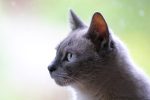Domestic Animals and Their Food Habits Basic Science Primary 5 Second Term Lesson Notes Week 4
Domestic Animals based on the specified topic.
Domestic Animals and Their Food Habits
Subject: Basic Science
Class: Primary 2
Term: Second Term
Week: 4
Age: 7-8 years
Topic: Domestic Animals
Sub-topic:
- Common Domestic Animals
- Grouping Domestic Animals Based on Their Food
- Other Foods Eaten by Domestic Animals
Duration: 40 Minutes
Behavioral Objectives
By the end of the lesson, pupils should be able to:
- Identify common domestic animals.
- Group domestic animals based on their food habits.
- List other foods eaten by domestic animals.
Keywords: Domestic animals, food habits, carnivores, herbivores, omnivores.
Set Induction (Introduction):
The teacher shows pictures or toys of common domestic animals (e.g., goat, cow, dog, cat) and asks pupils to name them.
Entry Behavior:
Pupils are familiar with animals around their homes or community.
Learning Resources and Materials:
- Pictures, charts, or toys of domestic animals.
- Flashcards with animal names and foods they eat.
- Videos showing animals eating food.


Building Background/Connection to Prior Knowledge:
The teacher asks pupils about animals they have seen at home, farms, or markets and discusses how they take care of these animals.
Embedded Core Skills:
- Communication skills (answering and asking questions).
- Observation skills (examining animals and their habits).
- Critical thinking (grouping animals).
Reference Book: Lagos State Scheme of Work
CLASSIFICATION OF MAMMALS BASED ON THEIR DIET
Domestic Animals and Their Food Habits
1. Common Domestic Animals
Domestic animals are animals that live with humans and are kept for food, work, or companionship. Examples include:
- Mammals: Goat, cow, dog, cat, sheep.
- Birds: Chicken, duck, pigeon.
- Others: Rabbit, fish, horse.
2. Grouping Domestic Animals Based on Their Food
Animals can be grouped based on the type of food they eat:
- Herbivores (Plant-eating animals):
- Examples: Goat, cow, sheep.
- They eat grass, leaves, and vegetables.
- Carnivores (Meat-eating animals):
- Examples: Dog, cat.
- They eat meat or fish.
- Omnivores (Animals that eat both plants and meat):
- Examples: Chicken, pig.
- They eat grains, worms, or kitchen scraps.
3. Other Foods Eaten by Domestic Animals
Domestic animals eat specific foods to stay healthy:
- Goats, Cows, Sheep: Grains, hay, and leftover vegetables.
- Dogs and Cats: Fish, bones, and specially made pet food.
- Chickens and Ducks: Maize, millet, insects, and worms.
- Rabbits: Carrots, lettuce, and fruits.
Lesson Presentation
Step 1: The teacher revises the previous topic on wild animals and their habitats.
Step 2: Introduce the topic by showing pictures or toys of domestic animals and asking pupils to identify them.
Step 3: Discuss and explain the three groups of animals based on their food (herbivores, carnivores, omnivores).
Step 4: Use flashcards or pictures to show examples of what each animal eats.
Step 5: Encourage pupils to share stories or experiences about feeding domestic animals.
Teacher’s Activities
- Display pictures and flashcards of domestic animals.
- Ask guiding questions to help pupils identify the animals and their food.
- Explain the concept of grouping animals based on their diet.
Learners’ Activities
- Observe the pictures and identify animals.
- Categorize animals into herbivores, carnivores, and omnivores.
- Share experiences of caring for domestic animals at home.
Evaluation
Domestic Animals and Their Food Habits
- Animals that live with humans are called ________.
a. Wild animals
b. Domestic animals
c. Carnivores - A goat is an example of a ________ animal.
a. Carnivore
b. Omnivore
c. Herbivore - Chickens eat ________.
a. Grass
b. Maize and worms
c. Fish - Animals that eat only meat are called ________.
a. Omnivores
b. Herbivores
c. Carnivores - ________ are examples of herbivores.
a. Cats and dogs
b. Cows and goats
c. Chickens and pigeons - Domestic animals that eat plants and meat are called ________.
a. Omnivores
b. Herbivores
c. Carnivores - ________ is a food eaten by cows.
a. Fish
b. Grass
c. Meat - Rabbits eat ________.
a. Carrots
b. Fish
c. Chicken feed - Domestic animals kept for companionship are called ________.
a. Farm animals
b. Pets
c. Wild animals - Cats mostly eat ________.
a. Fish
b. Leaves
c. Grains
Class Activity Discussion Domestic Animals and Their Food Habits
- What are domestic animals?
Domestic animals are animals kept by humans for food, work, or companionship. - Give three examples of domestic animals.
Goat, dog, chicken. - What do herbivores eat?
They eat plants like grass and vegetables. - What are carnivores?
Carnivores are animals that eat meat. - Mention two foods eaten by chickens.
Maize and insects.
Conclusion
The teacher summarizes the lesson by revisiting the three groups of animals based on their food and the types of food eaten by common domestic animals. Pupils are encouraged to ask questions.
SEO Section
Captivating Title: Understanding Domestic Animals and Their Diets for Primary School Pupils
Focus Keyphrase: Domestic Animals and Their Food Habits 

SEO Title: Learn About Domestic Animals and Their Food Groups for Kids
Slug: domestic-animals-food-habits
Meta Description: Discover common domestic animals, their food habits, and other foods they eat in this engaging lesson for Primary 2 pupils. Perfect for teaching and learning.